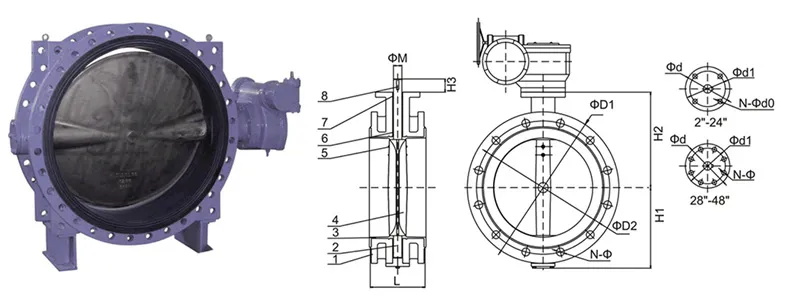Dec . 29, 2024 00:23 Back to list
low pressure check valve
Understanding Low Pressure Check Valves Function, Importance, and Applications
Low pressure check valves are critical components in various fluid systems, playing a vital role in ensuring the efficient and safe operation of piping networks. These valves are designed to prevent backflow, allowing fluid to flow only in one direction, which is essential for maintaining pressure and protecting equipment from potential damage caused by reverse flow. In this article, we will delve into the functioning, importance, and wide-ranging applications of low pressure check valves.
Function and Design
Low pressure check valves function on a straightforward principle. They are typically designed with a movable disc or ball that allows fluid to flow through when pressure is applied in the forward direction. When the pressure reverses, the disc or ball moves to seal off the flow path, thereby preventing backflow. The design of these valves is crucial, as they must operate effectively under low pressure conditions without compromising the flow characteristics of the system.
There are several types of low pressure check valves, including swing check valves, spring-loaded check valves, and diaphragm check valves. Each type has its unique design features and advantages. For instance, swing check valves utilize a hinged disc that swings open with forward flow and swings closed with reverse flow. In contrast, spring-loaded check valves use a spring mechanism to help close the valve when backflow occurs, which can provide a quicker response.
Importance of Low Pressure Check Valves
The significance of low pressure check valves cannot be overstated. They are crucial for ensuring the integrity and reliability of fluid systems in various industries, including plumbing, HVAC, water treatment, and chemical processing. By preventing backflow, these valves help to maintain pressure levels, which is essential for the proper operation of pumps and other equipment. This, in turn, minimizes the risk of damage and costly repairs.
Additionally, low pressure check valves play a key role in safeguarding against contamination. In systems where different fluids or gases are handled, backflow can result in cross-contamination, leading to hazardous situations or product spoilage. By effectively blocking reverse flow, check valves help maintain the purity of fluids in pipelines, which is particularly crucial in food processing and pharmaceuticals.
low pressure check valve

Applications of Low Pressure Check Valves
Low pressure check valves are employed in a multitude of applications across various sectors. In plumbing systems, they are often used in residential and commercial buildings to prevent wastewater from flowing back into the potable water supply. This backflow prevention is essential for maintaining public health and safety.
In the HVAC industry, low pressure check valves are used to control the flow of refrigerants and water, ensuring that systems operate efficiently. These valves help maintain the desired pressure levels within air conditioning and heating units, contributing to energy efficiency and system longevity.
In water treatment facilities, low pressure check valves are integral in preventing backflow in pipelines that transport treated water. This is vital for protecting the quality of the treated supply and ensuring that contaminants do not re-enter the system.
Furthermore, in chemical processing, low pressure check valves are used to manage the flow of various chemicals. The ability to seal off backflow ensures that potentially hazardous substances do not mix, which could result in unsafe reactions or environmental contamination.
Conclusion
In summary, low pressure check valves are essential components in fluid systems that serve to prevent backflow and maintain operational integrity. Their simple yet effective design makes them indispensable across various industries, from plumbing to chemical processing. By allowing fluid to flow in only one direction, these valves protect equipment, maintain pressure levels, and ensure the safety and quality of fluid systems. As technology advances, the design and materials used in check valves will likely continue to improve, enhancing their performance and expanding their applications in an ever-growing array of industries. Understanding the importance of these valves is crucial for anyone involved in the design, operation, or maintenance of fluid systems.
Share
-
Reliable Wafer Type Butterfly Valves for Every IndustryNewsJul.25,2025
-
Reliable Flow Control Begins with the Right Ball Check ValveNewsJul.25,2025
-
Precision Flow Control Starts with Quality ValvesNewsJul.25,2025
-
Industrial Flow Control ReliabilityNewsJul.25,2025
-
Engineered for Efficiency Gate Valves That Power Industrial PerformanceNewsJul.25,2025
-
Empowering Infrastructure Through Quality ManufacturingNewsJul.25,2025